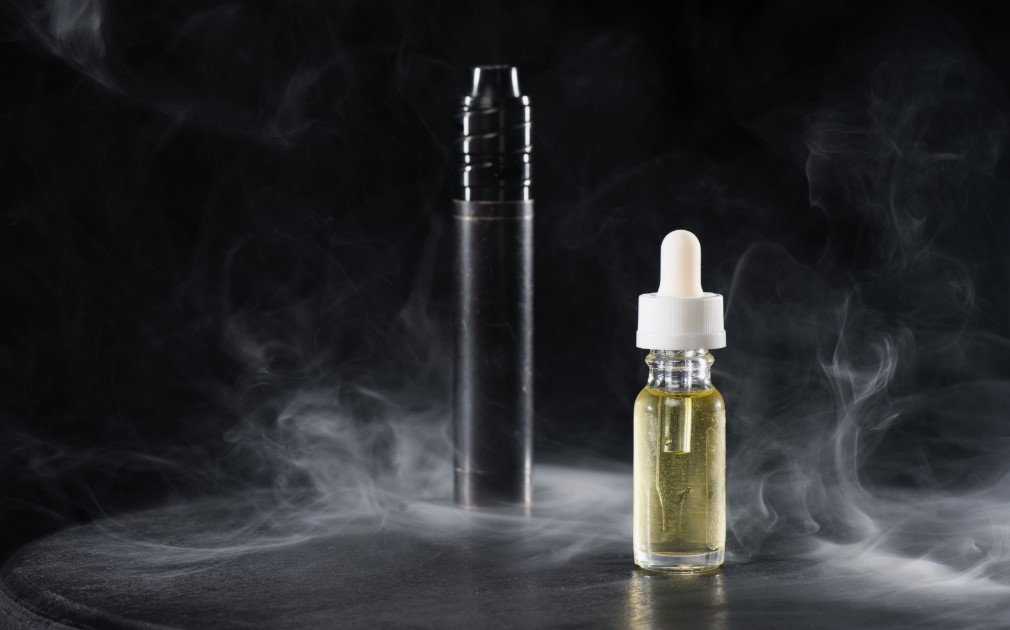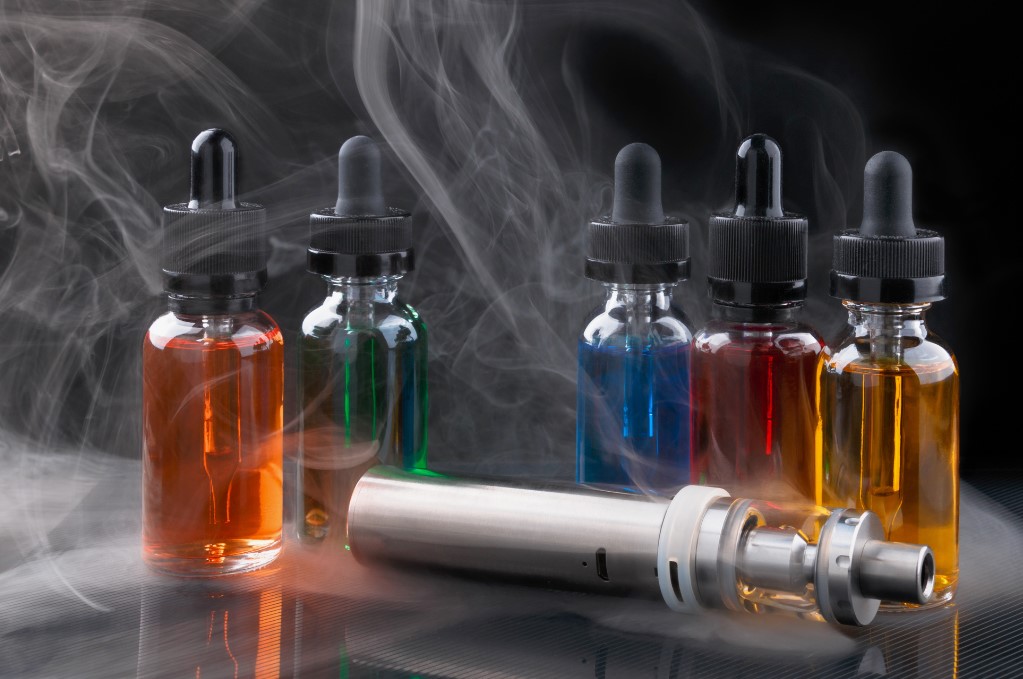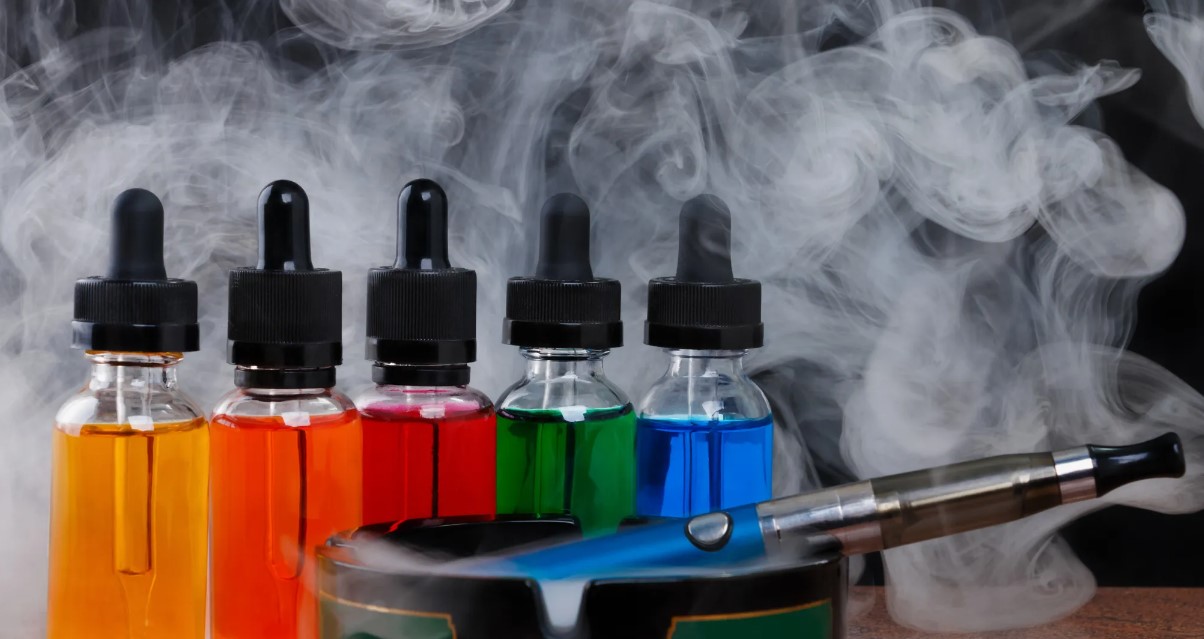Over the past ten years, the vaping sector has grown quickly, providing a wide range of goods to suit the varied tastes of vapers. E-liquids sometimes referred to as vape juice or e-juice, are among these goods and are essential to the vaping experience. For vapers to make educated judgments, they must be aware of the typical components present in e-liquids, their uses, and any potential health risks. This thorough guide explores the main ingredients in e-liquids and offers an in-depth analysis of their technical features and possible health effects. Transparency and quality are our top priorities for vape Smoke Hub, and we ensure that our customers know about the goods they consume.
Introduction
The liquid solutions used in vaporizers and electronic cigarettes are called e-liquids. They are in charge of giving the consumer vapor, flavor, and nicotine. E-liquids come in various combinations but often include nicotine, propylene glycol (PG), vegetable glycerine (VG), flavorings, water, alcohol, and additives. Every component has a distinct function and enhances the vaping experience as a whole. This piece will examine these elements in depth, including their uses, technical characteristics, and any related health concerns. Knowing what’s in your e-liquid can help you make wiser decisions and have a safer, more enjoyable vaping experience.
Propylene Glycol (PG)
Purpose:
- Water-absorbing synthetic liquids are called propylene glycol (PG). In e-liquids, it serves as a base or carrier liquid.
- The “throat hit” sensation, which simulates the feeling of smoking a regular cigarette, is a product of PG.
Technical Aspects:
- PG is a tasteless, colorless liquid that has a hint of sweetness. Because of its low viscosity, it generates greater flavor but less vapor.
- Because it can absorb moisture and blend well with other materials, it is frequently used in food, medicine, and cosmetic applications.
Health Considerations:
- In general, the FDA and other health agencies consider PG safe for topical application and consumption. However, some people may experience minor allergic reactions or respiratory irritation.
- Throat irritation or dry mouth are frequent adverse effects. If you notice these symptoms, you may wish to switch to e-liquids with a greater VG percentage.
Price: E-liquids with a high PG content typically range from AED 30 to AED 70.

Vegetable Glycerin (VG)
Purpose:
- Vegetable oils are the natural source of vegetable glycerine (VG), which serves as an additional base liquid in e-liquids.
- Thick vapor clouds that are produced by VG give vaping its aesthetic appeal.
Technical Aspects:
- VG is a colorless, thick, viscous liquid with a sweet flavor. Because of its higher viscosity, it produces denser vapor than PG.
- Because of its moisturizing characteristics and capacity to enhance texture, it is extensively used in the culinary, pharmaceutical, and cosmetic sectors.
Health Considerations:
- VG is widely accepted as harmless compared to PG and less prone to trigger allergic responses. Nonetheless, a slight dehydration or sweet aftertaste may occur for certain people.
- Users should maintain hydration to lessen the consequences of any potential dehydration.
Price: E-liquids with high VG content range from AED 40 to AED 80.
Nicotine
Purpose:
- Nicotine, the addictive ingredient in e-liquids, is an alkaloid that is extracted from the tobacco plant.
- It gives smokers the desired “hit” or experience when vaping.
Technical Aspects:
- The quantity of nicotine in e-liquids might vary; it usually ranges from 0 to 50 mg per milliliter.
- There are two types of nicotine available: nicotine salts and freebase nicotine, which have varying throat sensations and rates of absorption.
Health Considerations:
- Addicting substances like nicotine can have several negative health impacts, such as elevated blood pressure and heart rate.
- Based on their intended nicotine consumption and past smoking behaviors, users should select the appropriate nicotine strength. To prevent reliance and possible health hazards, it is important to use nicotine carefully.
Price: Nicotine-containing e-liquids are priced between AED 50 and AED 100.

Flavorings
Purpose:
- E-liquids can have a variety of flavors, from fruit and dessert to smoke and menthol, thanks to adding flavorings.
Technical Aspects:
- These flavorings are typically food-grade and safe to consume. They frequently consist of intricate blends of synthetic and natural components.
- E-liquids can include varying amounts of flavorings, ranging from 5% to 20%.
Health Considerations:
- While flavorings are typically considered safe to ingest, breathing them in can have negative health effects. Diacetyl, for example, is utilized in buttery flavors and has been connected to respiratory problems.
- Manufacturers of e-liquid with a good reputation usually test their flavorings for safety and stay away from substances that might be dangerous. When buying e-liquids, always look for certificates or lab findings.
Price: E-liquids with various flavor profiles range from AED 30 to AED 100.
Water
Purpose:
- To improve vapor production and modify viscosity, water is occasionally added to e-liquids.
Technical Aspects:
- Particularly with high VG e-liquids, it helps thin the liquid and facilitate vaporization.
- Most e-liquids have very little water in them—about 5%.
Health Considerations:
- An excessive amount of water might dilute the flavor and nicotine, making vaping less enjoyable.
- Properly adjusted water content ensures the best vapor production without sacrificing the purity of the e-liquid.
Price: E-liquids with balanced water content are priced between AED 30 and AED 70.
Alcohol (Optional)
Purpose:
- Sometimes, alcohol is employed as a solvent to improve the components’ mixability; this is usually ethyl alcohol.
Technical Aspects:
- It aids in dissolving some flavorings that PG or VG might not go well with.
- Less than 1% of the total alcohol used is normally consumed.
Health Considerations:
- The small amount of alcohol in e-liquids usually evaporates during the vaping process, so there aren’t many health hazards.
- But some who are alcohol-sensitive could like e-liquids without it.
Price: E-liquids containing alcohol as a solvent are priced between AED 30 and AED 70.

Additives (Optional)
Purpose:
- Sweeteners, cooling agents, and enhancers are additives that change and enhance the vaping experience.
Technical Aspects:
- The sweetness of flavors is enhanced by sweeteners like ethyl maltol or sucralose.
- Cooling ingredients such as WS-23 or menthol give out a refreshing feeling without tasting minty.
- Further enhancers might be added to stabilize the e-liquid or bring out certain flavor notes.
Health Considerations:
- Use additives sparingly to protect your health and maintain a well-balanced flavor profile.
- Certain additives in high quantities can cause coil accumulation and shorten the coil’s life.
Price: E-liquids with various additives range from AED 40 to AED 90.
Conclusion
Vapers can make more educated decisions if they know the typical components found in e-liquids, their uses, and any related health concerns. The two main ingredients of e-liquids are vegetable glycerine (VG) and propylene glycol (PG), each adding certain qualities to the vaping experience. While flavorings offer a variety of pleasing taste profiles, nicotine comes in many forms and strengths to suit the demands and tastes of users. To improve the vaping experience and maximize the consistency of the e-liquid, additives, alcohol, and water are added. At SmokeHub Vape Shop, we provide a large selection of premium e-liquids that satisfy safety regulations and suit various vaping tastes. You may pick goods that best fit your requirements and have a better grasp of the complexity of vaping by knowing what’s in your e-liquid.
Surfer, doer, hiphop head, hand letterer and identity designer. Operating at the sweet spot between minimalism and computer science to save the world from bad design. My opinions belong to nobody but myself. Tropical swift lover. I want to show people how IQOS is a great invention


